In our fast-paced digital era, new trends and technologies are emerging every day, making websites more interactive, fast, and engaging. As a web development company, we’re interested in keeping abreast of these things.
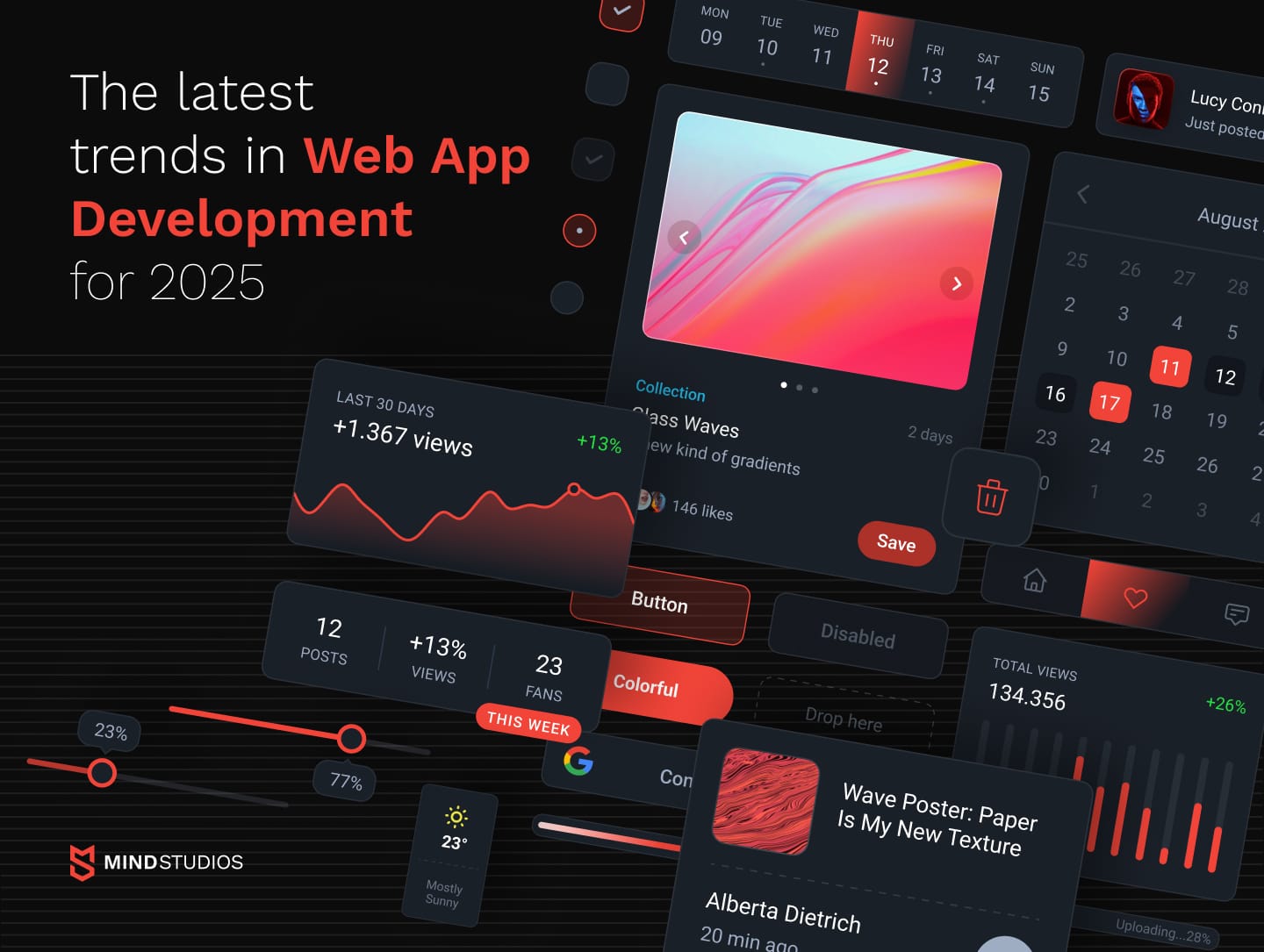
MyMP3Pool, a digital music streaming platform for DJs, was suffering from a significant decrease in user traffic when its owner came to us. We completely rebuilt the platform, which skyrocketed user engagement. According to the post-launch poll, 67.9% of MyMP3Pool users were satisfied with its modern UI/UX design.
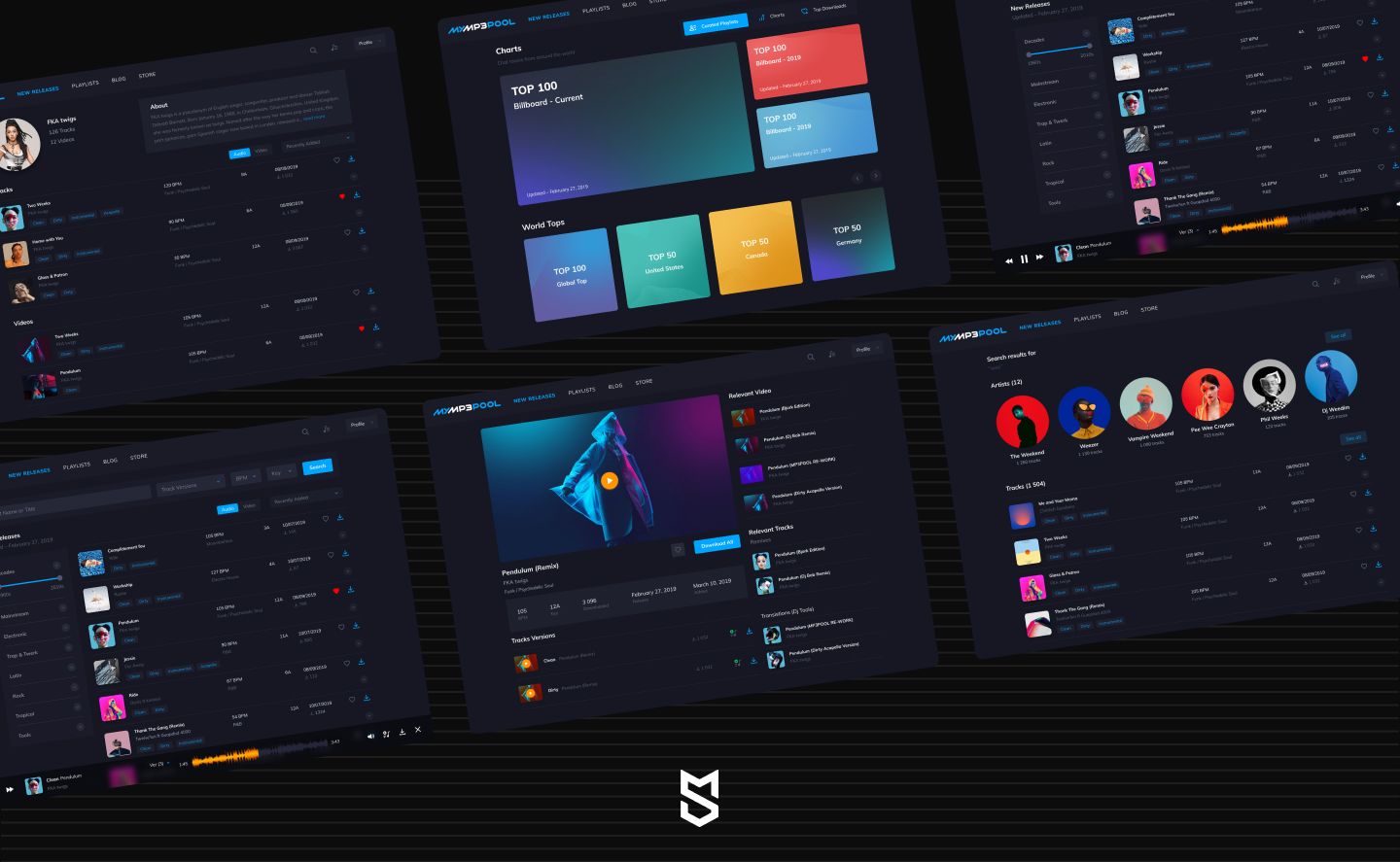
This is just one of many examples of how we improve the core business metrics for our clients thanks to implementing the latest web development trends.
This article lists trending web technologies and approaches — new and old — we believe will have a significant pull this year. Read on to learn what they are.
What is the future of web development in 2023?
Are you reading this article on your laptop or your smartphone? That is the core question at the heart of major website development trends in 2023.
It’s no longer a theoretical assumption: in 2022, 56% of people used mobile devices to browse the web. Another important data from a Google report is that if a website takes longer than three seconds to load, 53% of users will abandon it. To keep afloat and meet evolving user needs, web developers must have mobile-friendly websites that load quickly.
Technologies aimed at helping with faster loading times, better search engine rankings, more user traffic, and better user engagement are shaping the future of web development for 2023.
To name a few:
- Progressive web apps (PWAs). These applications offer fast loading times, improved performance, and offline access to content across all devices, including smartphones, tablets, and desktops. According to Google’s report, PWAs boost user engagement by 137% and increase conversions by up to 52%.
- Voice search optimization. Today, 58% of US consumers ages 25-34 use voice search every day. The popularity of voice assistants dictates website owners the need to optimize their websites for voice search to stay highly ranked by Google and loved by users.
- Artificial Intelligence (AI) integration, including AI-powered chatbots and virtual assistants, provides a seamless user experience by answering questions and providing personalized tips in a human-like manner. In addition, AI is often used to analyze user behavior and provide insights into improving website design and engagement. According to a report by Gartner, by 2023, 40% of all web development projects will include AI integration — so, to stay ahead of the curve, consider integrating a ChatGPT-like system into your website, for instance.
But these trendy technologies are just the tip of the iceberg. Let’s dive deeper into the latest trends in web application development and find out which are the best for small and medium-sized businesses.
The latest web development trends for the backend
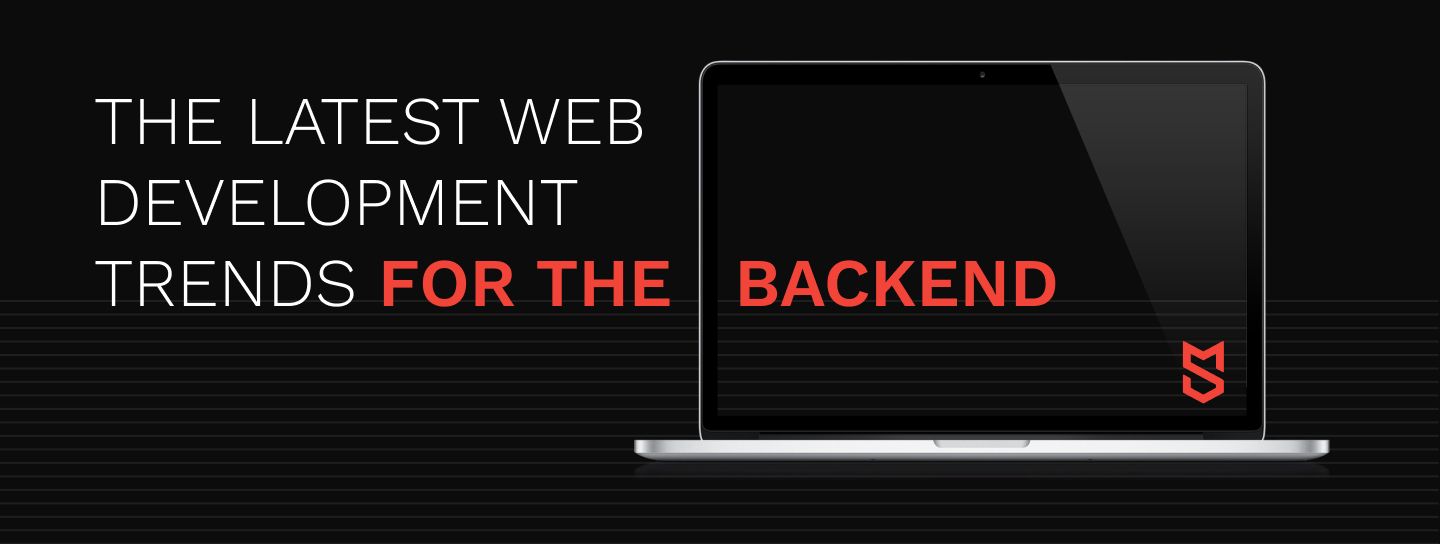
HTTP/3
HTTP/3 is the latest version of the HTTP protocol we’re all familiar with. It’s a significant leap from HTTP/2, mainly because HTTP/3 is built on the UDP-based QUIC protocol (pronounced “quick” and standing for Quick UDP Internet Connections), while HTTP/2 is based on TCP (Transmission Control Protocol). HTTP/2 uses a single connection, which is generally not an issue unless we’re talking about a low-quality network. In a low-quality network, HTTP/2 can be extremely slow, as it needs extra time to reprocess dropped packets.
A traditional UDP connection has a problem with data transfer reliability owing to its lack of extra error-checking mechanisms. When a packet is dropped, the system doesn’t retransmit it since it has no overhead for opening/maintaining/closing the connection. QUIC solves this problem with multiplexing or the simultaneous transmission of several signals via a single channel. It combines the reliability of TCP with the speed of UDP.
QUIC is basically what its name suggests — a faster protocol. It’s simpler, lighter, and more efficient, all while maintaining reliability. No wonder it’s been one of the trends in web development for years.
GraphQL
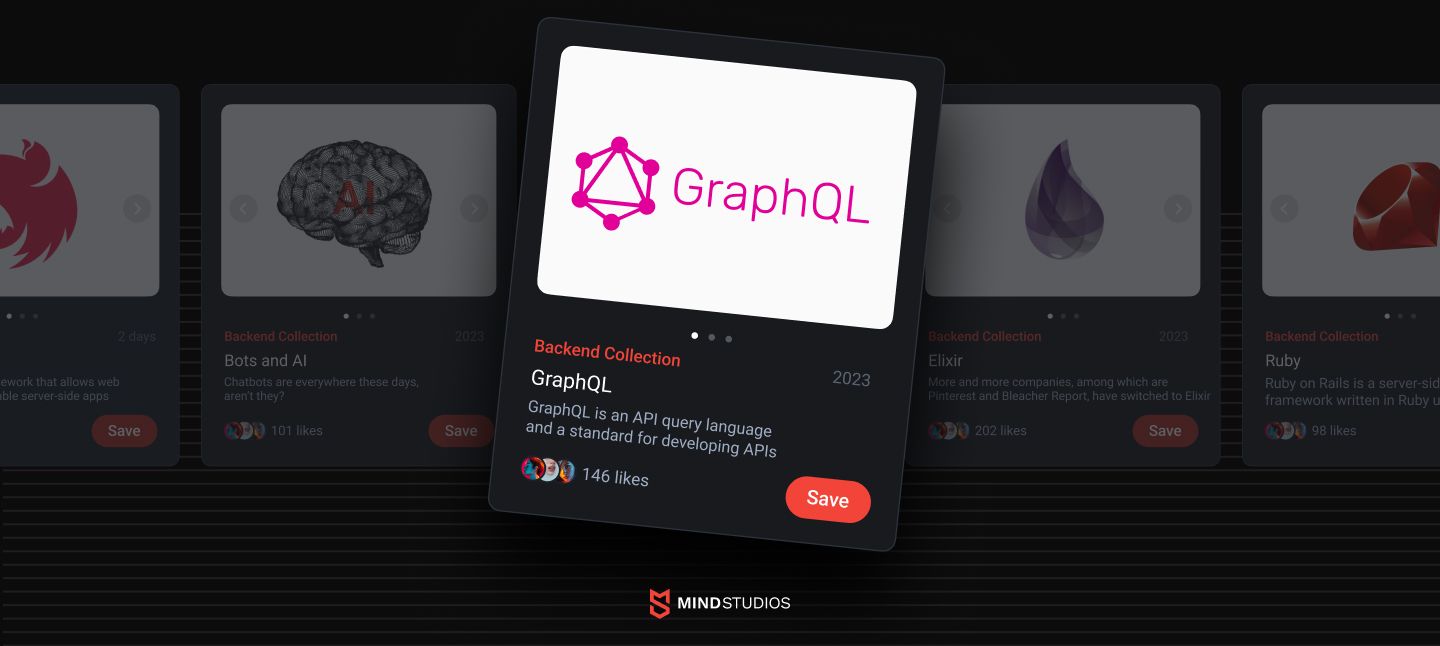
GraphQL is an API query language and a standard for developing APIs. It’s a child of Facebook, and it’s not even all that young — it was developed in 2012 and made open-source in 2015. But GraphQL is being adopted by more and more companies these days, which has compelled us to add it to our list of the latest web development trends for 2023.
Before GraphQL, we had REST, whose main issue was that it required multiple endpoints and pulled too much data from them, not all of it necessary for the task at hand. GraphQL is different. With GraphQL, you only get the data you specifically ask for through a single endpoint. This makes GraphQL faster and much more efficient. Also, the API code is way shorter since you don’t need to write a separate endpoint for each request.
Finally, it’s worth keeping in mind that GraphQL is an open-source language, meaning it can be upgraded by virtually anyone. Open-source makes for constant evolution. We’ll see what new web development trends GraphQL brings in the future.
Bots and AI
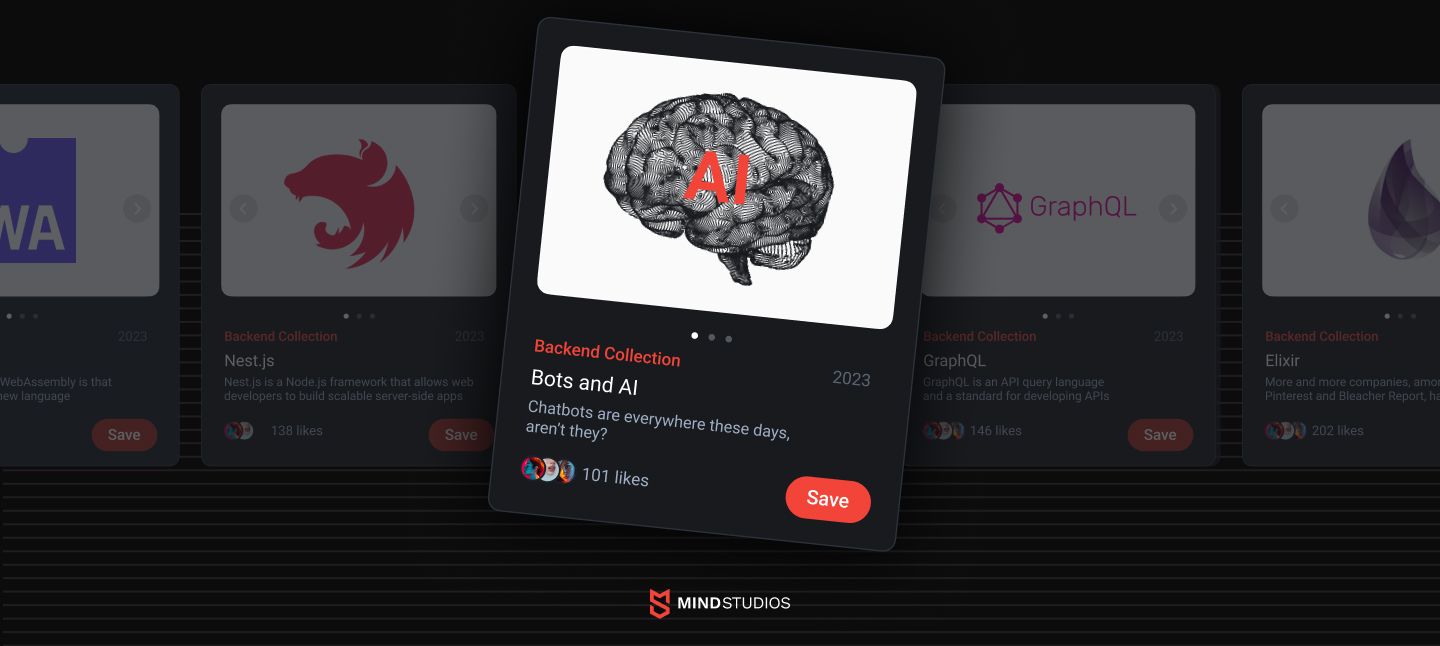
Chatbots are everywhere these days, aren’t they? They’re trending on the web as well as on mobile. And they’re not going to stop any time soon, it seems. Moreover, with the help of AI-powered natural language processing (NLP) systems, they’re becoming smarter and more efficient.
While a couple of years ago, chatbots only offered strictly preprogrammed conversations that solved a limited range of problems, today, chatting with a bot almost feels indistinguishable from chatting with a human support specialist.
AI has now crept its way even into web design. Tools like Sketch2Code can automatically turn a website sketch into an HTML prototype. AI enhances the user experience, makes search and recommendations more precise, and offers voice search optimization.
Nest.js
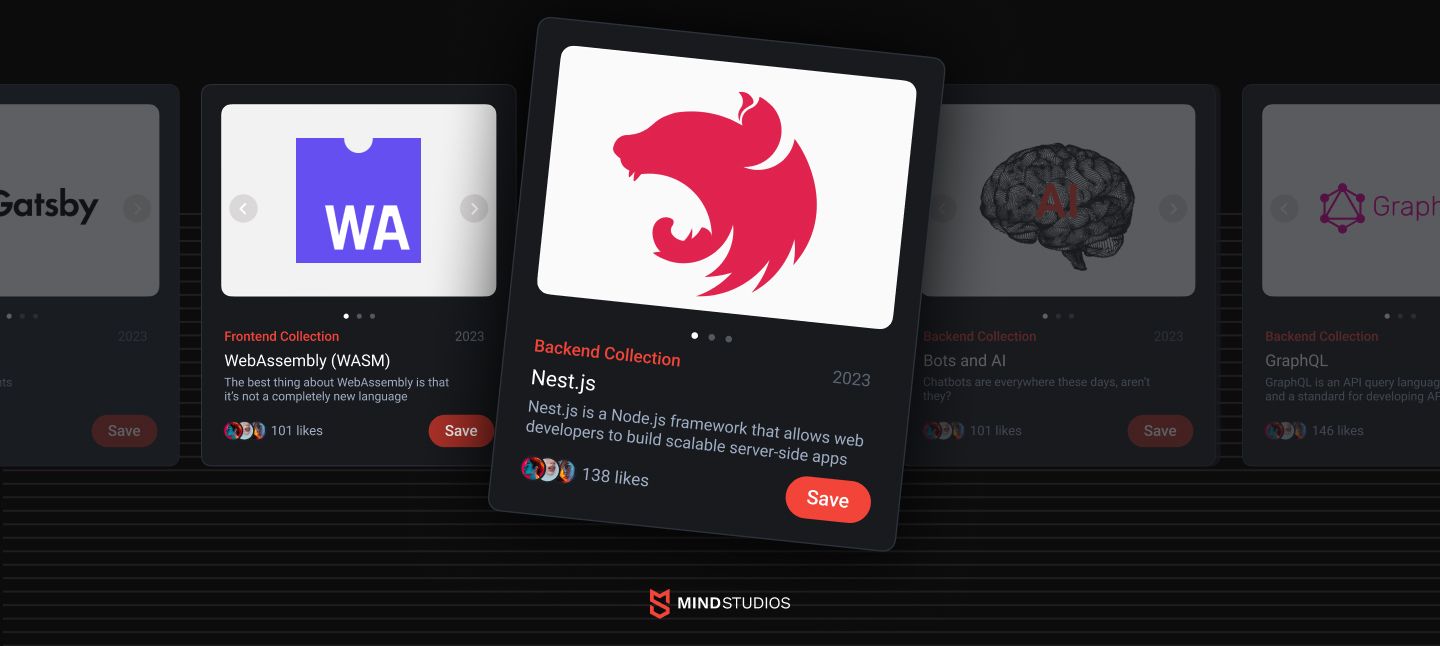
Nest.js is a Node.js framework that allows web developers to build scalable server-side apps. Nest.js has secured a place among the website development trends every CTO needs to keep in mind for the next year (and maybe longer) thanks to its combination of flexibility and safety.
Built using TypeScript, a superset of JavaScript, and heavily inspired by Angular, Nest.js is simpler, more flexible, and allows for less downtime than most other options. It’s fully compatible with Node.js Express servers and with most existing JavaScript libraries.
There are also out-of-the-box architecture solutions available for Nest.js, and its applications can be written not only with TypeScript but also with JavaScript if a developer prefers.
Serverless architecture
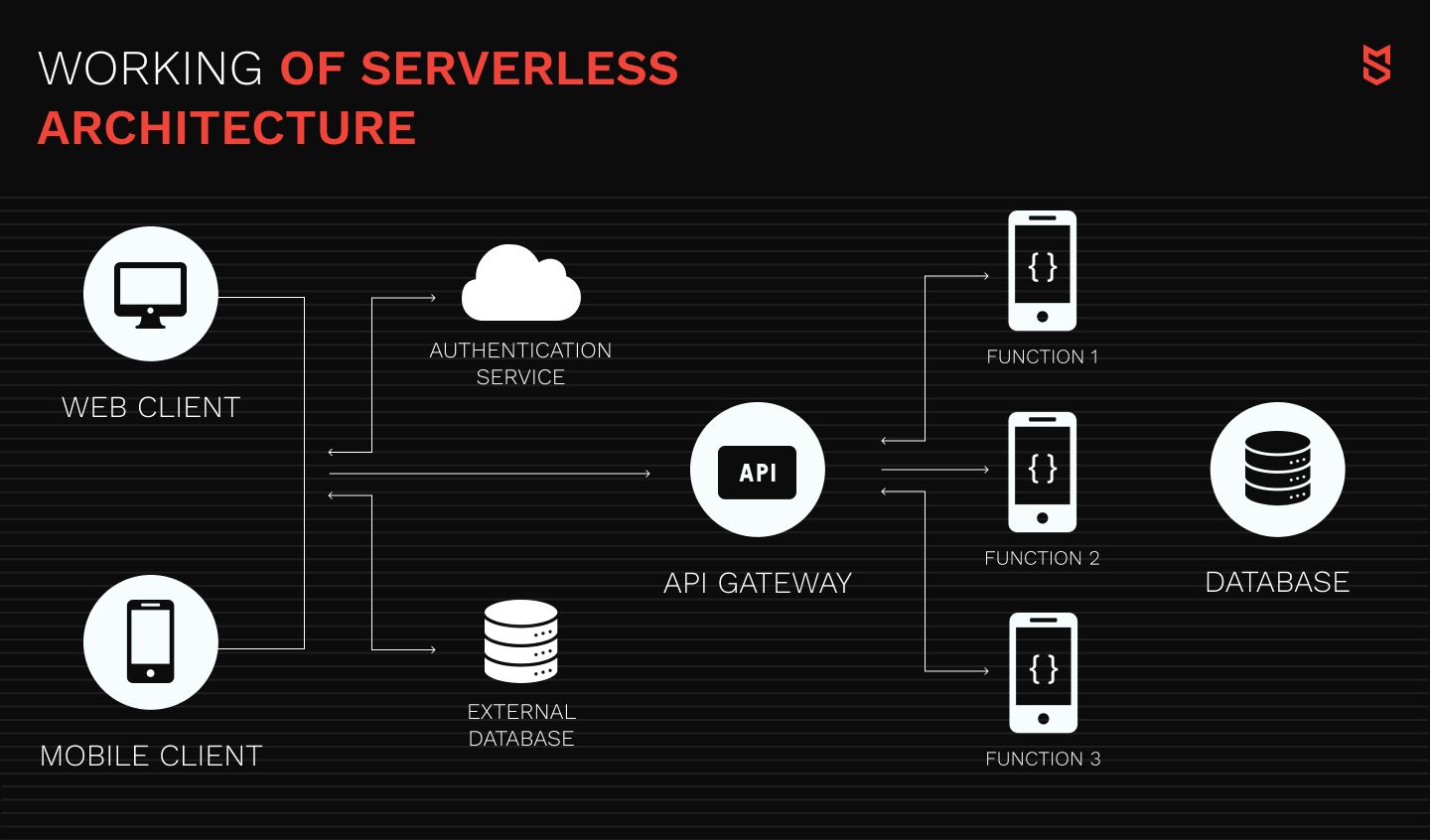
With this latest trend in web development, servers, operating systems, and other underlying infrastructure required to build and run your web app are becoming no longer your concern.
Your developers can focus on writing code while shifting management of servers and infrastructure to third-party providers. Some popular serverless providers include AWS Lambda, Google Cloud Functions, and Azure Functions.
A serverless approach can help website owners reduce costs associated with setting up and maintaining their own servers. Moreover, by using serverless infrastructure, they can scale their web applications to meet the peaks of high traffic without spending a fortune on hardware upgrades. For that purpose, for example, Nordstrom's e-commerce site uses serverless architecture to handle peak shopping periods.
Microservices
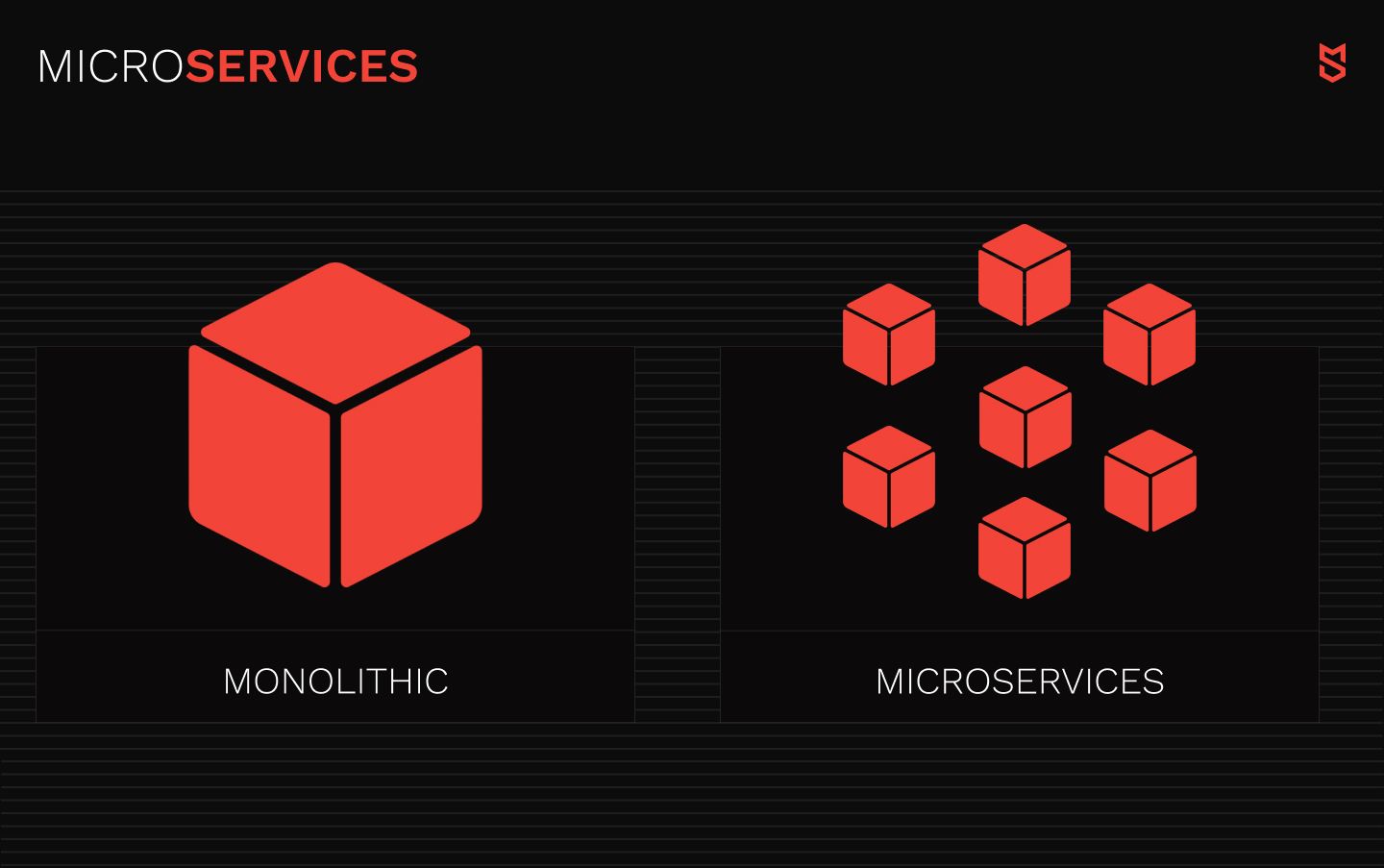
Monolithic architecture becomes overly complex when it comes to fixing bugs, meeting new business requirements, scaling, etc. Decomposing complex monoliths into a set of smaller, independently deployable microservices has been rising in popularity over the last few years, despite being a challenging task. Developers trade one kind of complexity for another with the aim to achieve extended flexibility and scalability in the long run.
Each microservice is responsible for a specific function, and they communicate with each other through APIs. Microservice architecture works well for cloud deployments, enabling microservices-powered platforms to offer their services via APIs and evolve as “software as a service” companies.
You can see microservices in action in Netflix, which has over 700 of them to handle everything from streaming to billing to customer support.
Event-driven architecture
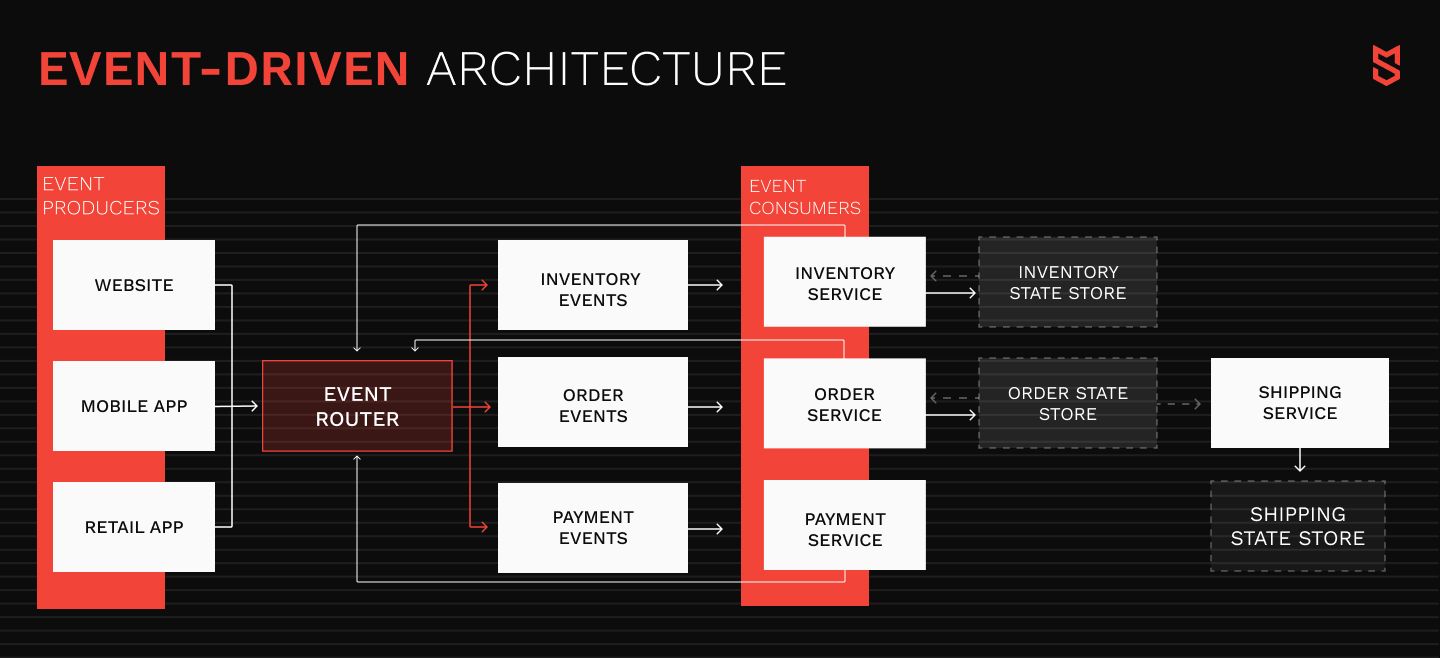
In this design pattern, events are actions that can include anything: a customer submitting payment information, an attempted security breach, a change in the application state, etc. With EDA, you can record, transmit, and process events in real time via a decoupled architecture or, in other words, asynchronously.
EDA is built on event channels which include event producers (they create events), event routers (they receive data from event producers and distribute it to different consumers), and event consumers (they receive events to process in real-time).
Web developers use this approach when parallel processing, data replication, real-time monitoring, redundancy, and interoperability are needed. In addition, EDA is commonly used with microservices to quickly and efficiently transfer data between decoupled systems at scale.
One example of EDA in action is Uber, which uses EDA to handle ride requests, driver availability, and real-time location tracking.
Docker and Kubernetes
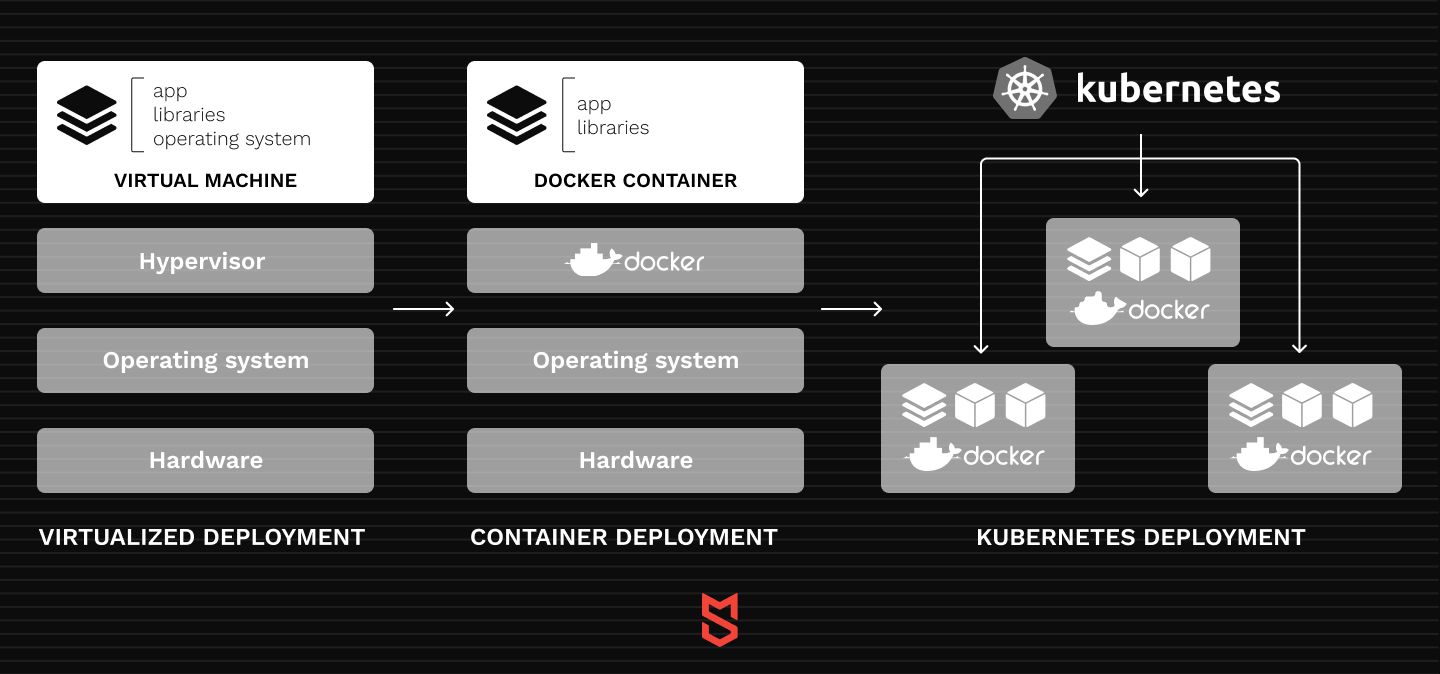
These two technologies, Docker and Kubernetes, can rightfully bear the title of the latest trends in web application development that every developer should learn in 2023. Why so?
As a containerization platform, Docker allows developers to package applications and their dependencies into single, lightweight, portable units called containers. Kubernetes, in turn, provides a set of tools and APIs to handle the deployment, scaling, and management of those containers. In brief, combining Docker and Kubernetes allows developers to build, manage, and scale web applications quickly and efficiently.
Spotify, for instance, relies on Docker and Kubernetes to manage its infrastructure and deploy its applications.
Backend trends suitable for SMBs
It's easier to know which backend trends are better suited for a particular business segment when knowing more about the business specifics and needs. Each of the above-described trends has its own advantages and use cases. The choice ultimately depends on factors such as the type of application being developed, the expected traffic volume, and the desired level of scalability.
However, some website development trends may be more applicable to certain businesses. For example, serverless architecture and microservices may be well-suited for startups or small businesses that need to scale quickly and need more resources to manage their own infrastructure.
Event-driven architecture may be more appropriate for businesses that require real-time processing capabilities, such as running a stock trading platform or food delivery website.
To determine which backend trend best suits your business needs, we recommend conducting initial tech stack research for a startup or an all-encompassing software audit for a fully functioning business.
New trends in web development for the frontend
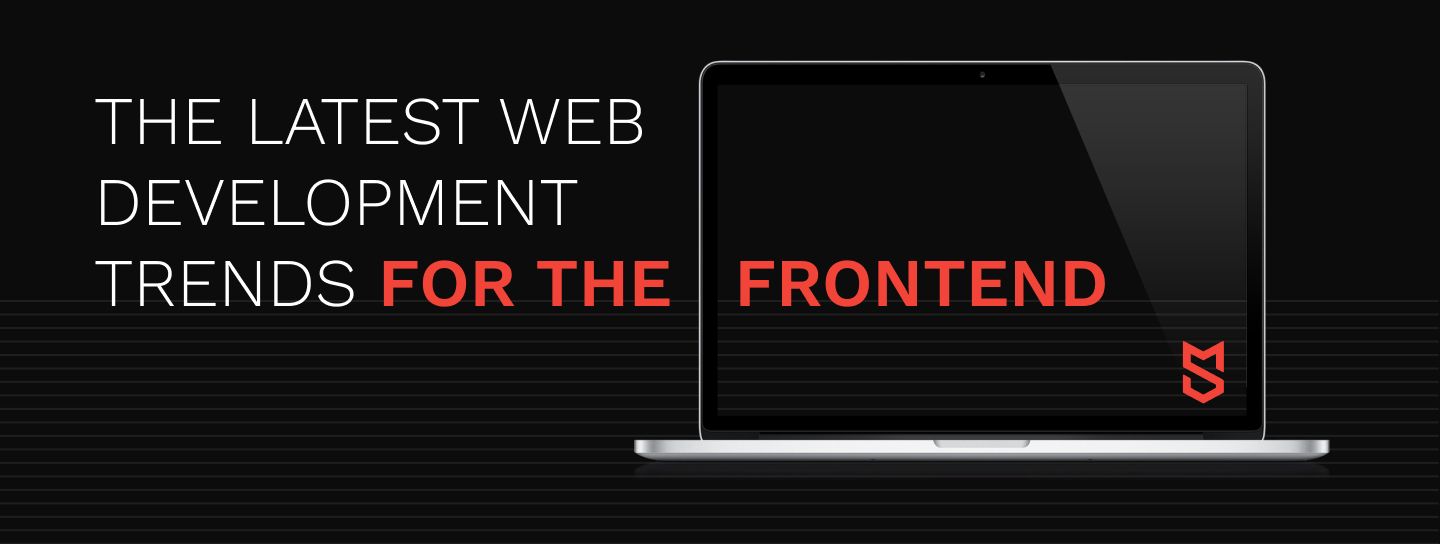
Micro-frontends
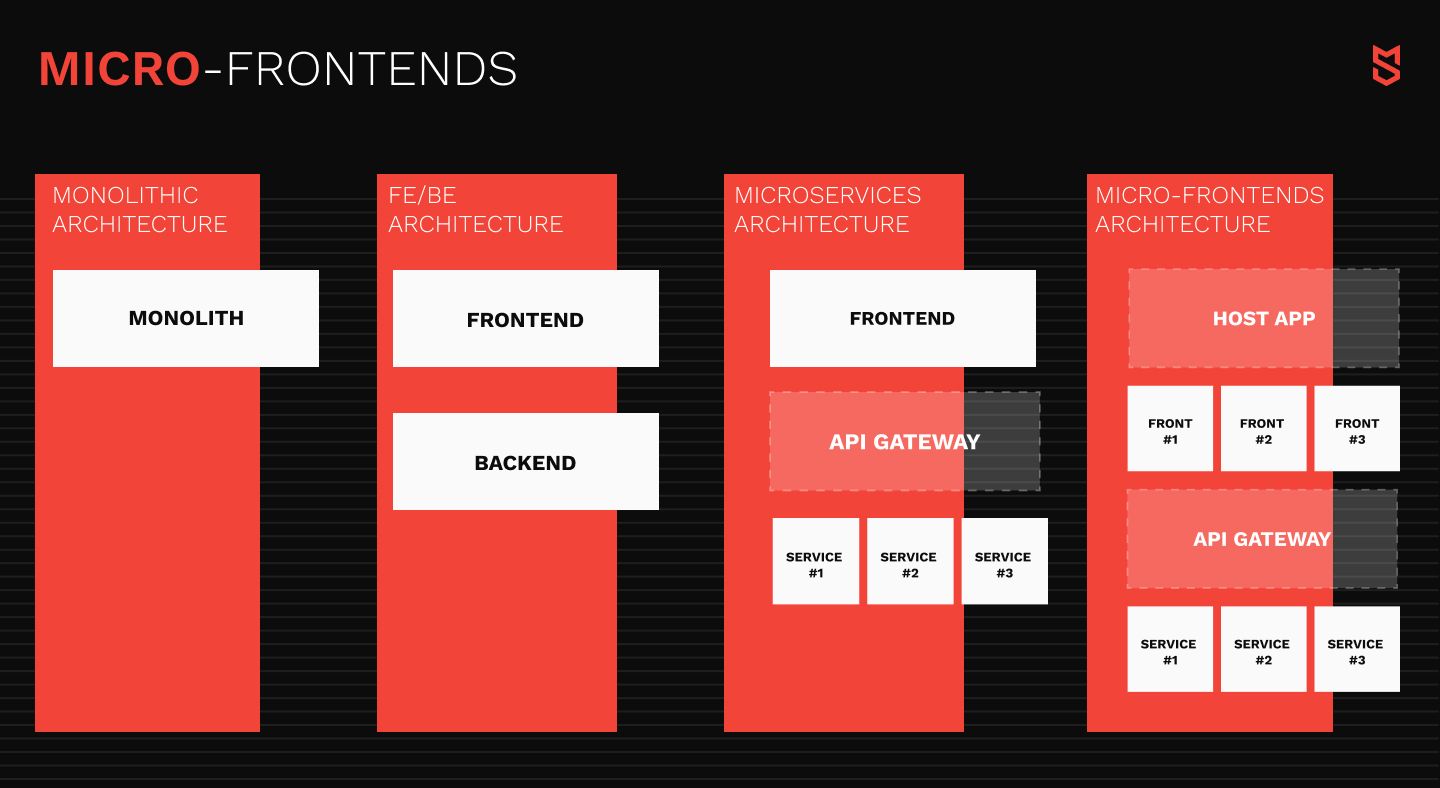
Like microservices in backend development, micro frontend architectural style involves breaking down large monolithic web applications into smaller, more manageable parts. Each part, or a micro-frontend, is responsible for a specific function or feature of the application. As a result, a micro fronted approach allows developers to create more flexible, scalable, and easy to maintain products.
Spotify is a great example of a company that has implemented micro frontends. Each application part, such as the search bar or the playlist feature, is built and maintained by a separate team.
Micro frontends work well for e-commerce websites. For example, Zalando, a large online retailer, uses micro frontends for specific parts of the website, such as the product details or the shopping cart.
API-first development
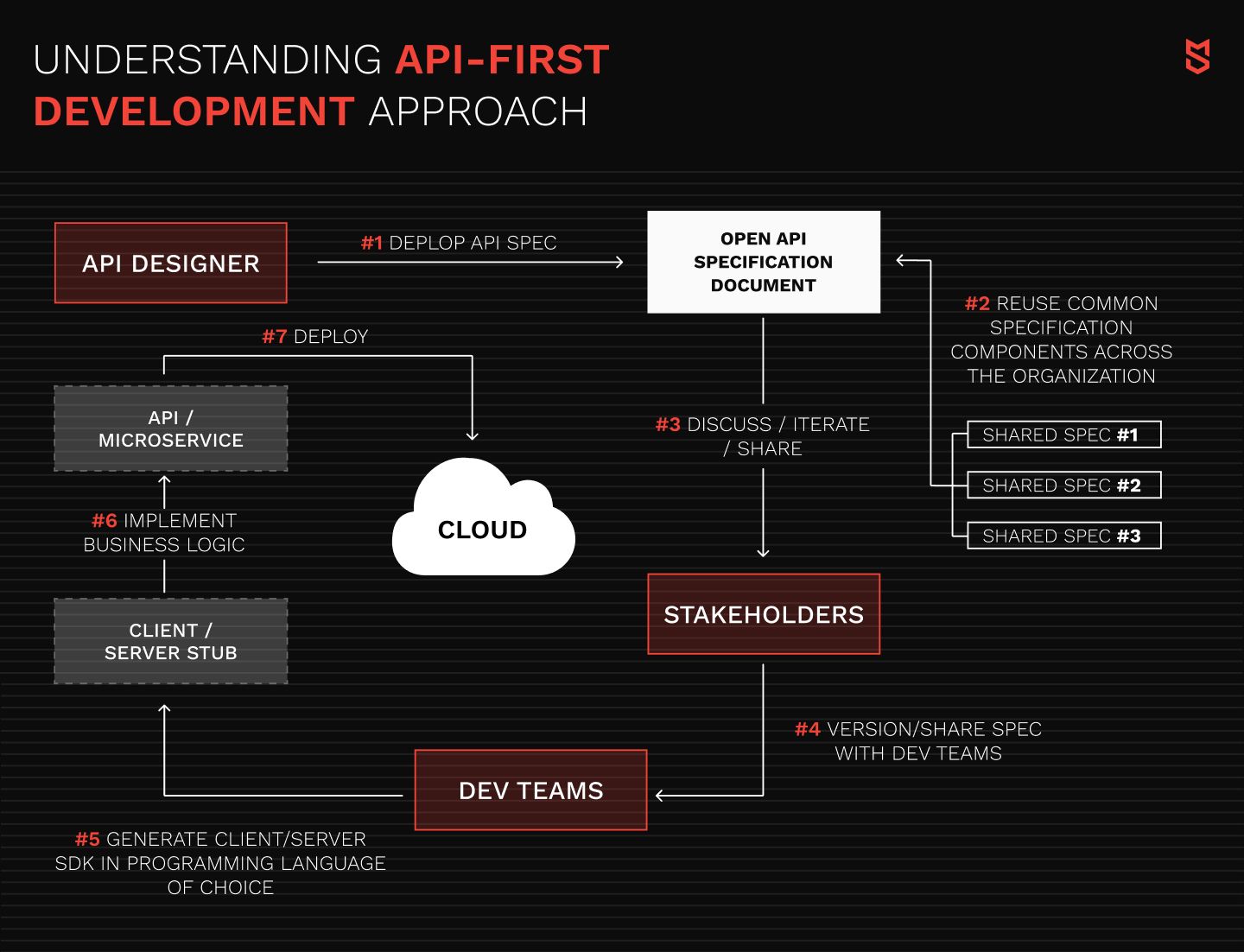
This web trend involves designing and building the application programming interface (API) before any other application part. This approach ensures that the API is well-designed, efficient, and can support a wide range of client requests.
Among followers of the API-first approach are the popular cloud communications platform Twilio and no less popular customer relationship management (CRM) system Salesforce.
WebAssembly (WASM)
JavaScript is great, but it’s not without faults. One particular issue JavaScript has is performance. It’s the same issue for all interpreted programming languages, and WebAssembly is the latest way to battle it.
The best thing about WebAssembly is that it’s not a completely new language. You can write in the preferred language and then compile it to a WASM file to run in browsers. Languages currently supported by WebAssembly are C/C++, Elixir, Rust, Python, Go, C#/.Net, and Java.
WebAssembly has been on the market for some years already, so it’s not a new trend, per se. But it’s developing fast and offering more and more options. It’s also now supported by all major browsers by default, which makes having it under your programmer’s belt a great thing.
Progressive Web Apps (PWAs)
A progressive web app is basically a web page with functionality close to that of a native mobile app:
- It can be “installed” on devices in just a moment — users simply pin the page to their smartphone’s home screen to have access to it at any moment, even offline.
- It’s responsive — it adjusts to the device’s screen size and mode automatically.
- It’s safe — PWAs must be served via HTTPS.
- It looks and operates like a native app but takes up way less space.
There are still limitations to PWAs, of course, and they can’t push native apps away completely. (Do they need to, though?) In particular, being essentially web pages, PWAs can’t use most hardware features like NFC and Bluetooth. However, not all apps require this functionality.
PWAs are faster, easier, and cheaper to develop, which is why they’re still trending in web development this year.
Accessibility (a11y)
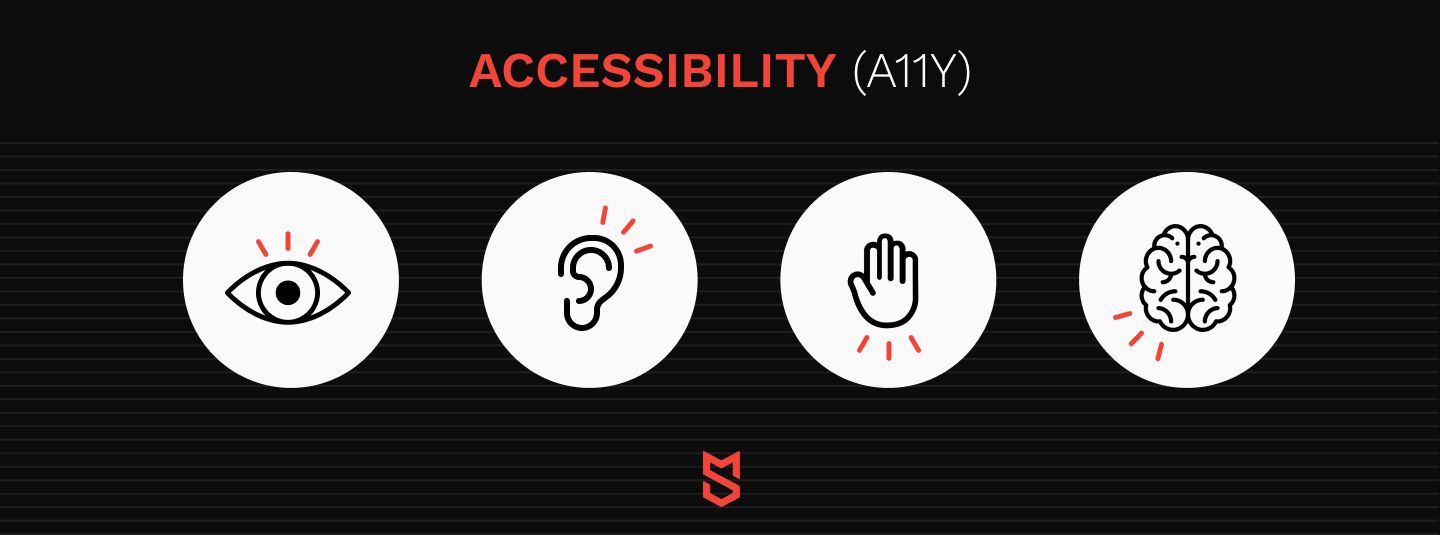
This is one of the most important trends in web application development. We believe accessibility should be on the top of every website developer’s list not only for new sites but for updates to old ones.
Accessibility, or a11y, is a principle that says computer systems should be convenient for all kinds of users. Websites should work well on all kinds of devices, yes. But they should also work well for users with all kinds of impairments and disabilities. A11y generally refers to the accessibility of both software and hardware.
When it comes to web development, accessibility can be achieved via:
- larger or customizable font sizes
- optional high-contrast pages
- support for speech synthesis/text-to-speech
- subtitles in video
- transcripts for all audio files
- speech recognition for navigation
- plain-language texts
- highlighting important parts
- consistent navigation with as few steps as possible
- simplified authorization (but without sacrificing data security)
- navigation with a keyboard instead of a mouse/touchpad
- semantic HTML
The name a11y comes from the fact that there are 13 letters in “accessibility,” so there are 11 between “a” and “y.” But if you look closely, a11y looks like the word “ally” — a friend, an assistant, a partner.
JavaScript trends
There’s little new in JavaScript as a whole, of course, but there are several frontend frameworks that have been taking the world by storm over the past few years. Let’s talk about them a little.
Gatsby.js
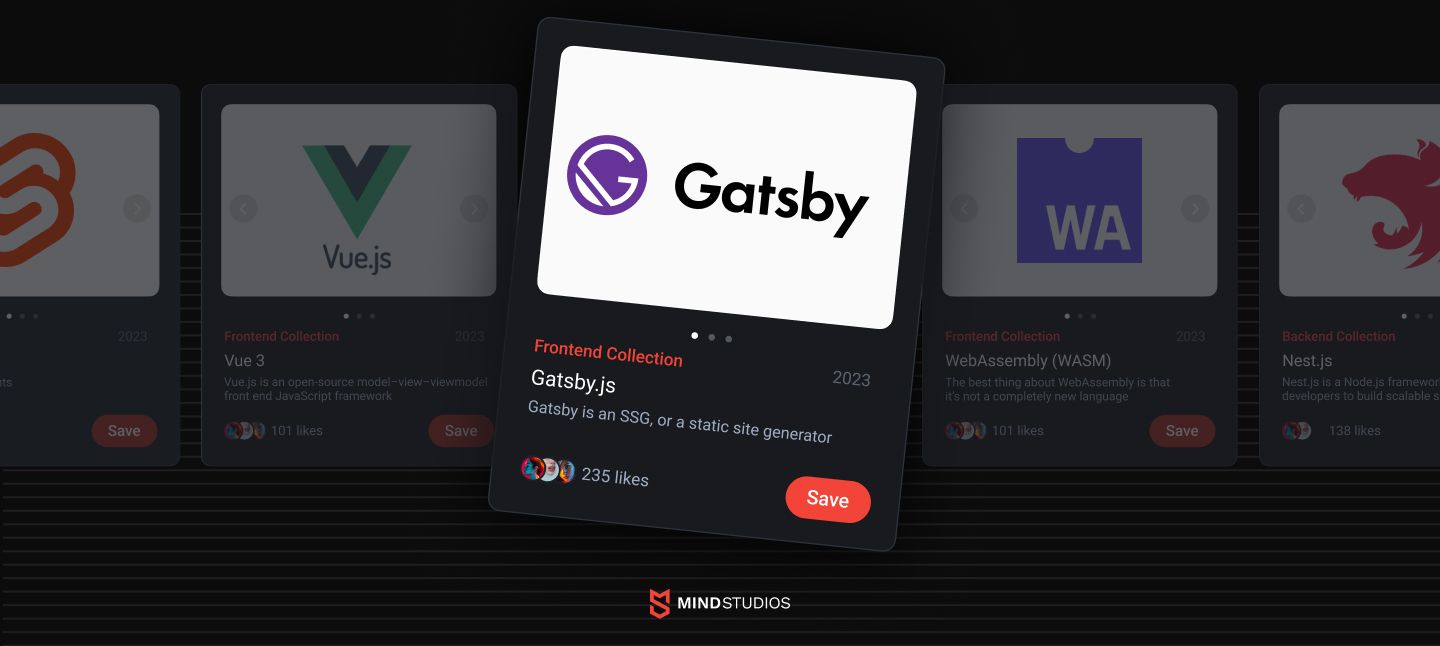
Gatsby is an SSG, or a static site generator. And if you think that static sites are a thing of the past, we’ve got news for you: they’re among the latest technology trends in web development.
One of the biggest pros of Gatsby.js is that it doesn’t require traditional servers; it works with BYOC (Bring Your Own Content) and can build a website based on data from a CMS, CSV, APIs, and markdown files. Gatsby also uses GraphQL, a high-end API query language we’ve mentioned before, for building data layers.
Mastering Gatsby.js does require a developer to know React Native and/or GraphQL, but you don’t need deep knowledge right off the bat — you can start learning all three at the same time.
Gatsby.js is an SSG that’s perfect for developing e-commerce websites. This React-based generator helps you create sites that load in the blink of an eye, quite literally — we’re not talking seconds here, we’re talking milliseconds. Any e-commerce business owner knows that sometimes a split-second delay in page loading can make all the difference in whether the customer makes the purchase. This is true for other types of sites, though maybe to a lesser extent.
SPA frameworks
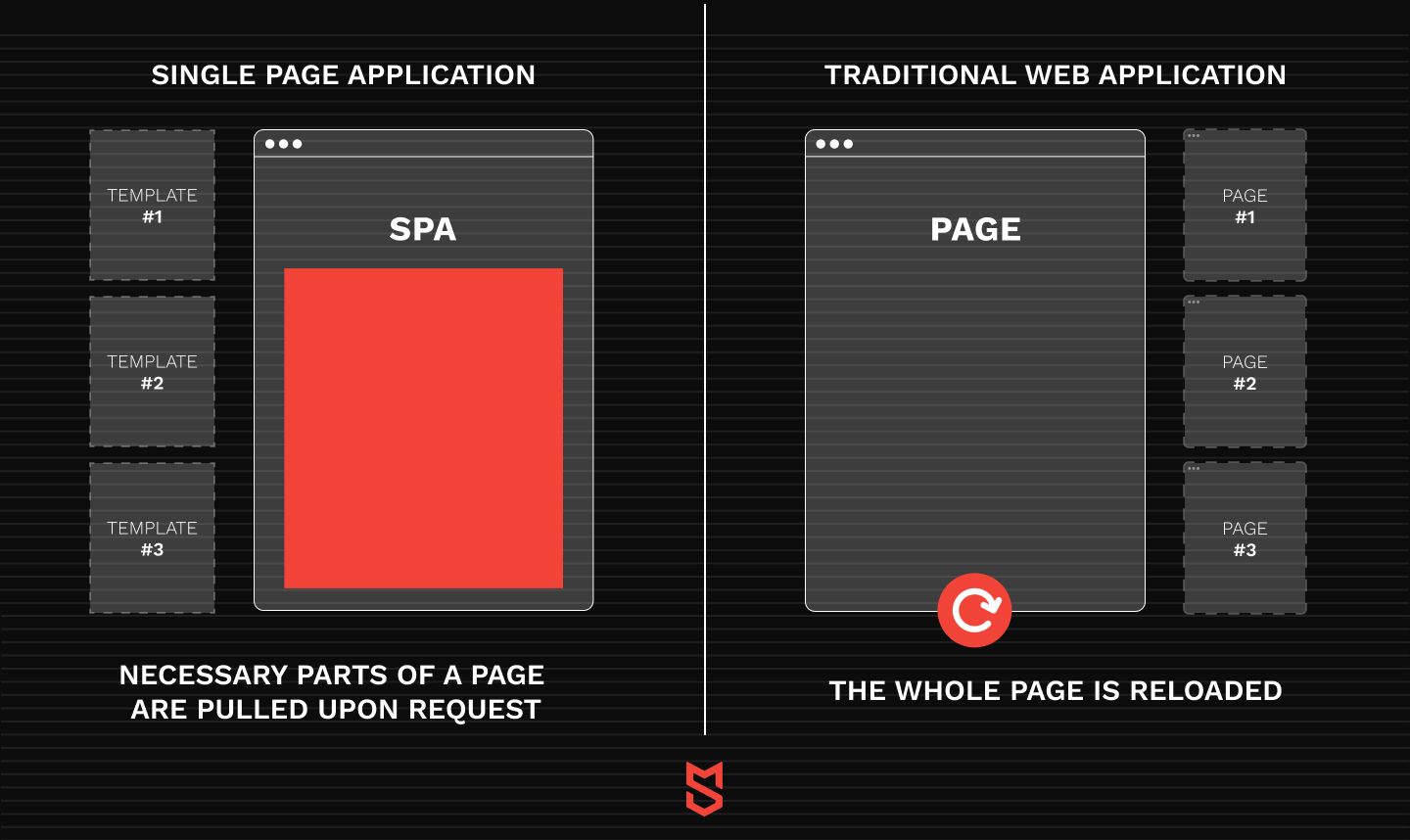
You’ve probably noticed how with most websites, there’s the same basic interface for all, or most, pages. Still, when you go to a different page within the website, the whole page reloads, including those elements that are the same. That’s what happens with multi-page web applications.
SPA frameworks, or single-page applications, are web apps where the page doesn’t reload fully when a user clicks between sections; it only pulls up the necessary data instead of requesting a complete update of the HTML. This shortens the loading time. It also requires way less bandwidth.
Today, SPAs can be implemented with three main frameworks: React, Vue, and Angular. React has the biggest market share, while Vue, being the new kid on the block, has the smallest.
However, Vue.js is probably the best tailored to work specifically with SPAs — it’s really small yet scalable, flexible, and offers top-shelf integration options.
Vue 3
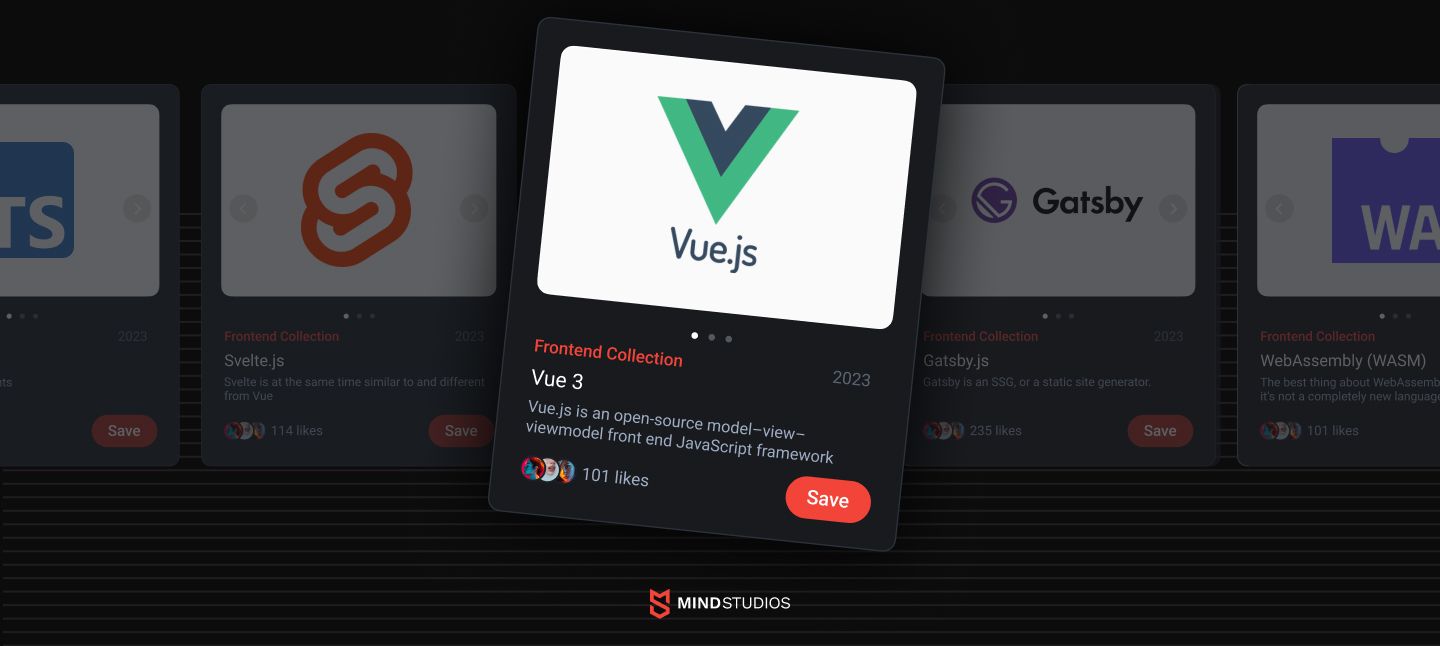
At the end of June 2019, Evan You and the team behind Vue.js posted an RFC (request for comments) regarding the new iteration of the framework, Vue 3, which was met with quite a bit of negativity within the community. But as it turned out, this negativity was loud but not all that massive. Also, as often happens, it was born out of a number of misunderstandings.
The reason some web developers had their panties in a twist was because Vue.js suddenly got a function-based component API to replace the familiar object-based one. However, that wasn’t exactly correct. The new function-based component API is an addition of sorts and can be used together with the traditional object-based API if you want to.
The new syntax in the Vue 3 Composition API has better logic and makes for better code structuring. Some developers even say it shortens the code slightly. As of the time of writing, the Vue 3 framework is available as a plugin for Vue 2 using the Vue Composition Library.
Svelte.js
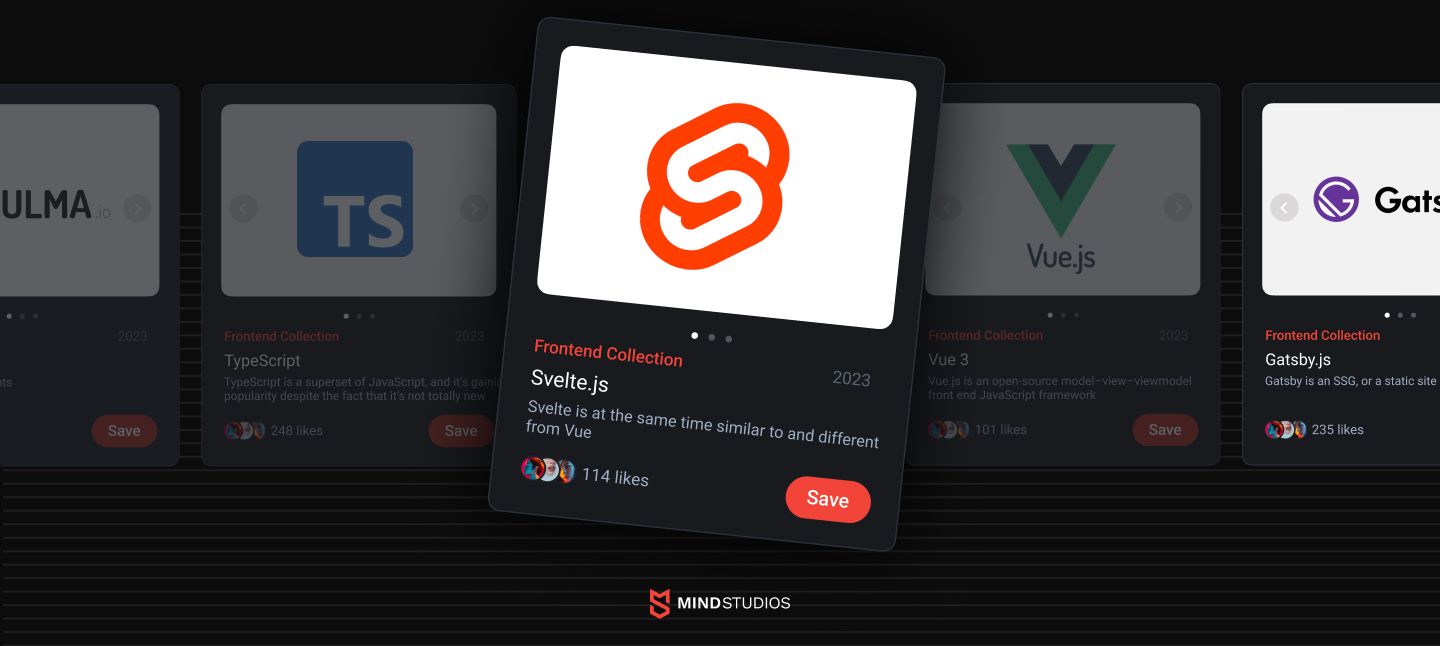
Introduced by Rich Harris at JSConf EU 2019, Svelte is at the same time similar to and different from Vue. It’s similar in that it’s also a component framework. However, unlike Vue, Svelte is a component compiler that runs during build time. This makes it possible to load only the components necessary for displaying your app. You don’t use a virtual DOM when you work with Svelte.
Svelte has a simple syntax that enables developers to access variables from markup instead of using state wrappers that are different for different frameworks. This makes Svelte a nearly perfect framework for those new to web development. For more experienced developers, Svelte means the possibility to write code faster and get higher-performing websites as a result.
In the year since its presentation, Svelte has gone through major improvements and updates, resulting in what many developers today call one of the simplest and most beautiful frameworks in existence.
TypeScript
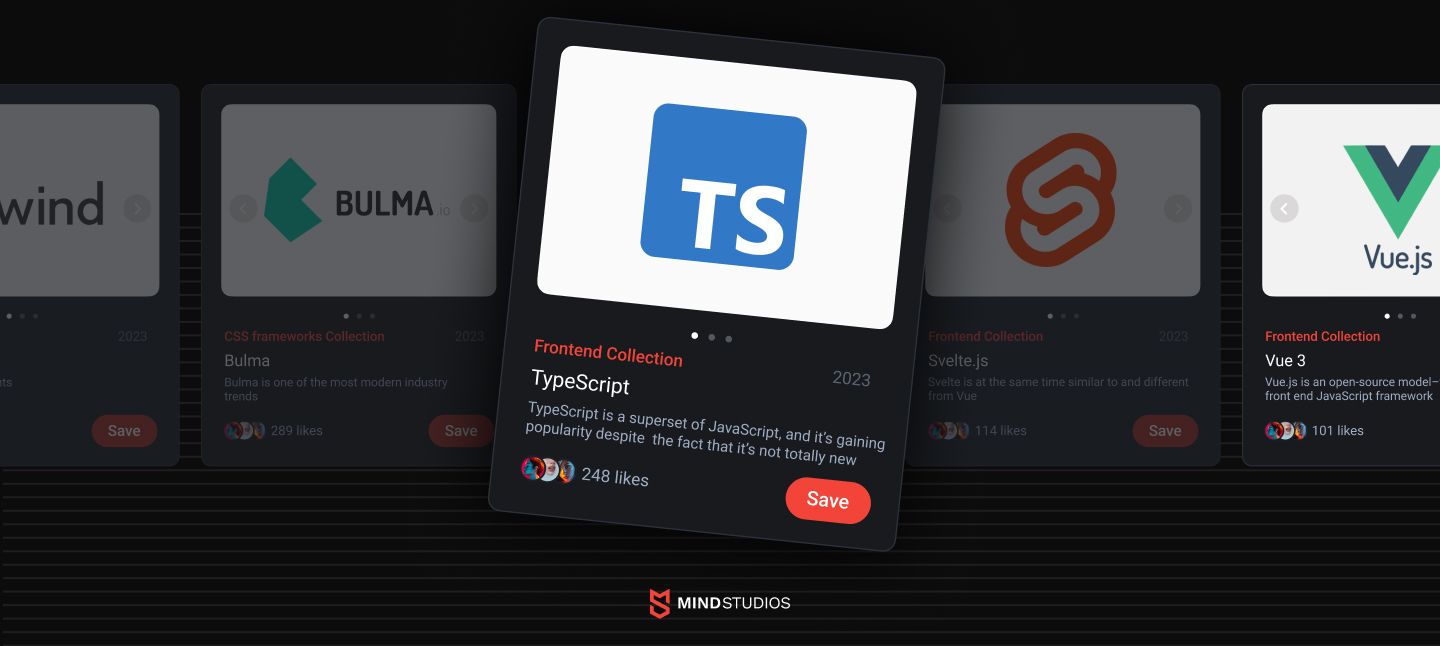
TypeScript is a superset of JavaScript, and it’s gaining popularity despite (or maybe thanks to) the fact that it’s not totally new. It’s been among the web programming trends for a couple of years now, and being open-source, it’s constantly being developed and upgraded.
The advantages of TypeScript include optional static typing. It also makes JavaScript’s new features backward compatible — ES6 and ES7 can be converted to ES5 and lower using the compiler. This means that code written for the newest browsers will still work with old ones.
TypeScript is more readable, more flexible when it comes to refactoring, easier to test, and has a lot of top-notch documentation for developers. It’s believed by many to be the future of JavaScript.
CSS frameworks
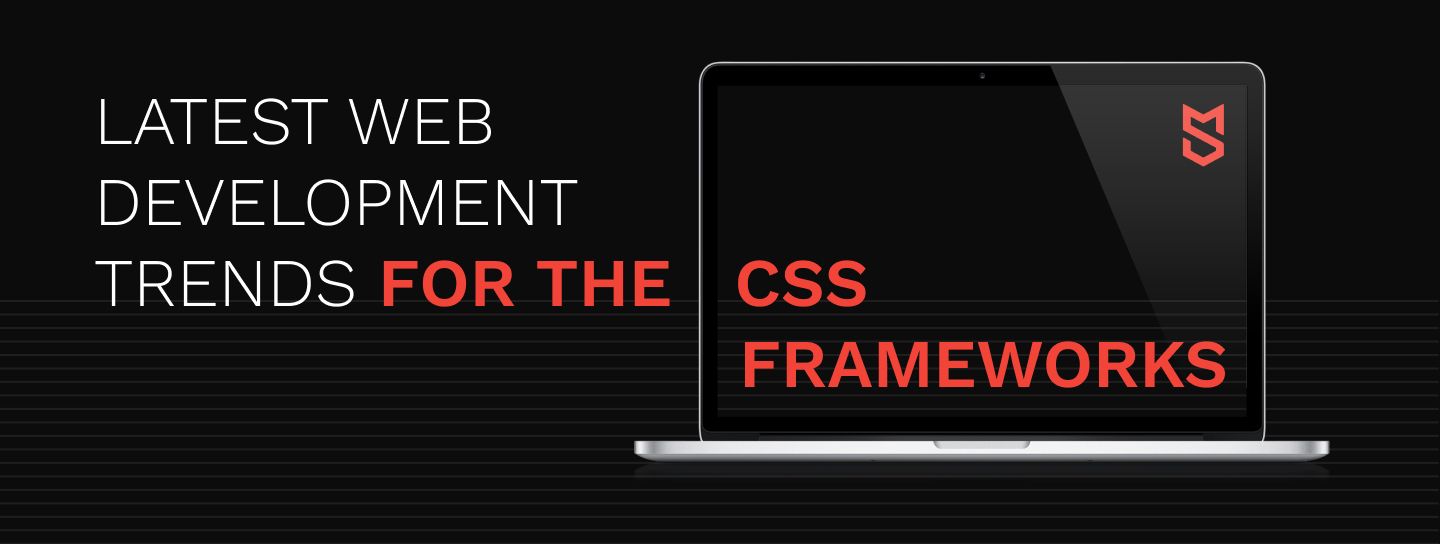
Frameworks make everything simpler, and that includes the much-maligned CSS. Let’s see what’s trending in CSS this year.
Houdini CSS
Houdini (as in Harry Houdini, the famous illusionist) is a very unique framework among the latest web application development trends. Basically, Houdini is a collection of APIs that provide developers access to the CSS Object Model. What this means is that if you need styles that aren’t yet available in CSS, there’s no need to overwrite the CSS with JavaScript. With the Houdini CSS framework, you can write code that will be seen by browsers as CSS and parsed as such.
The result is that parsing takes way less time, developers don’t need to wait for browser providers to expand CSS, and designs can become more customized and unique.
There’s still one issue, though: Houdini isn’t yet supported by all major browsers. But the process has been launched and we’re waiting for the way we use CSS to change completely.
Bulma
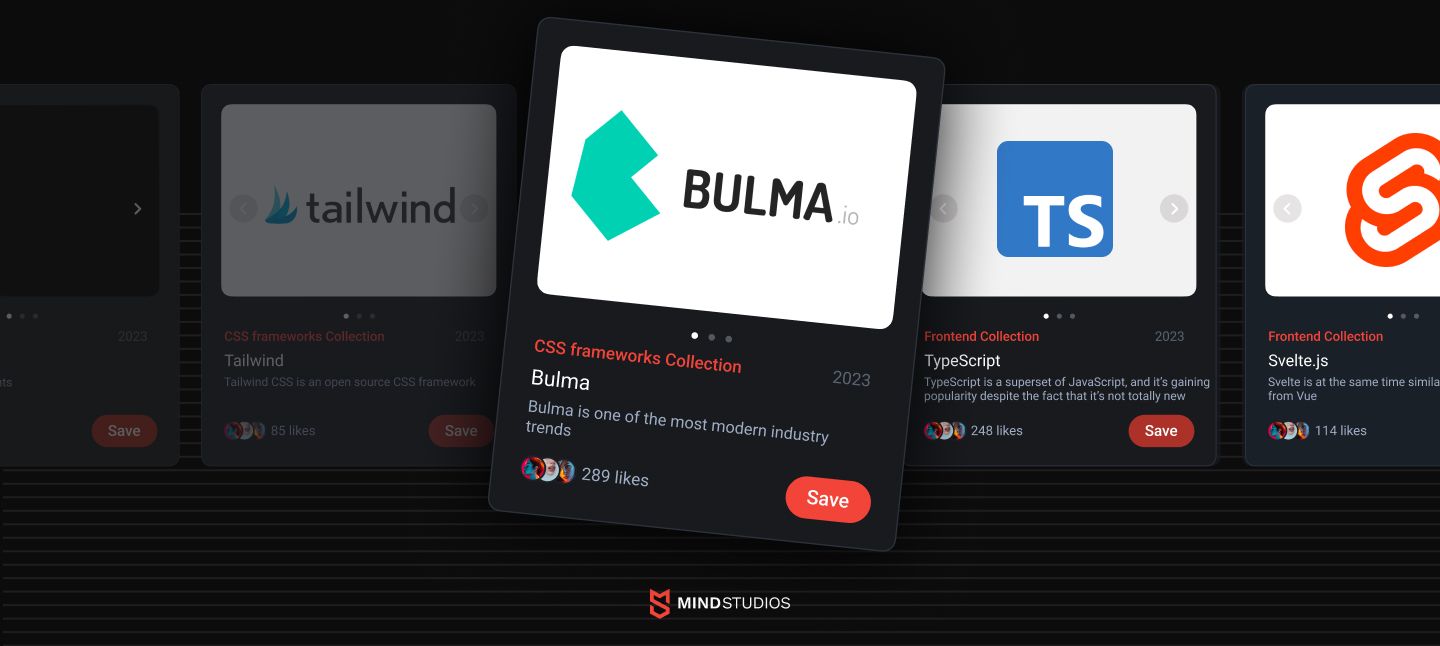
Bulma is one of the most modern industry trends. It’s built with the Sass (Syntactically Awesome Style Sheets) extension and based on the CSS Flexible Box Layout Module, or Flexbox for short. Flexbox is a module often used for building responsive websites.
Bulma is a free open-source CSS framework that offers a range of community-created themes with as few styles as possible. It’s simple to implement and can be customized thanks to the Sass build. Owing to the simplicity of Bulma’s CSS code, websites built with it are usually compatible with all browsers and pose little to no issues. Currently, it’s one of the most popular CSS frameworks among developers, and it looks like it’ll hold the position next year as well.
Tailwind
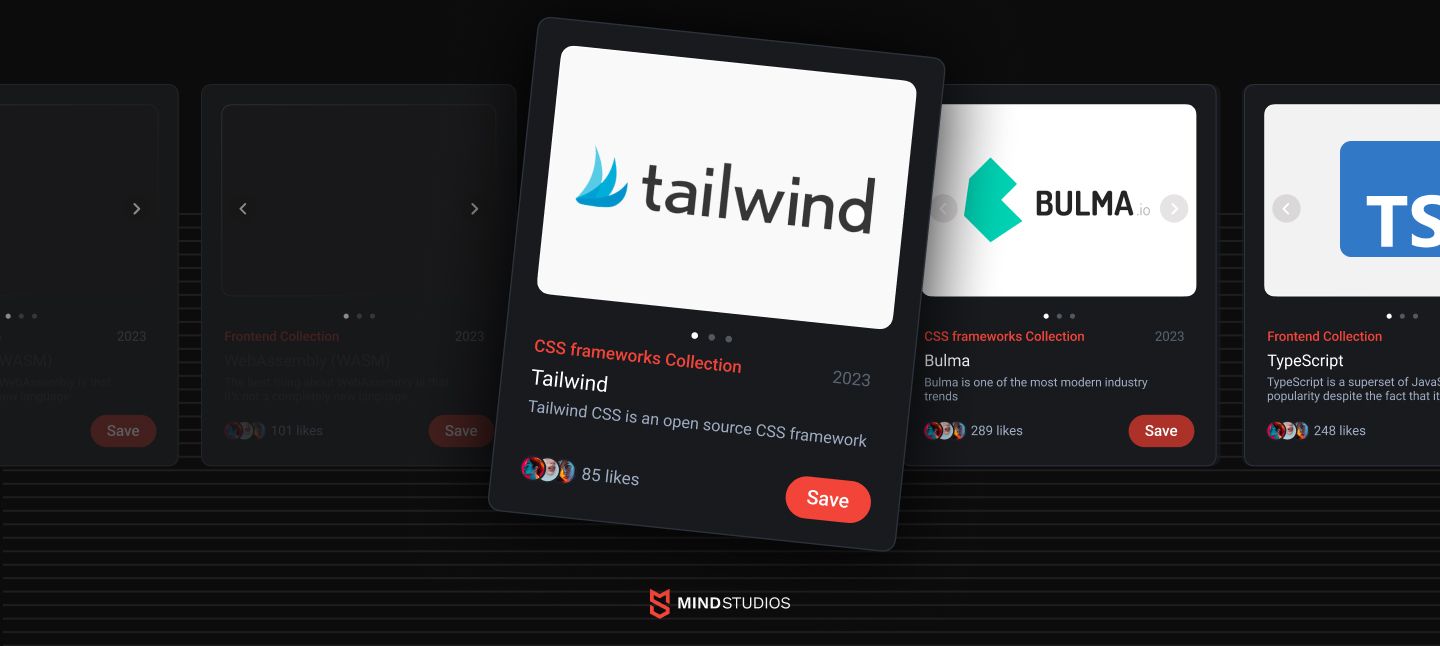
The Tailwind CSS framework has been around for some time but has risen in popularity quite a bit in recent months.
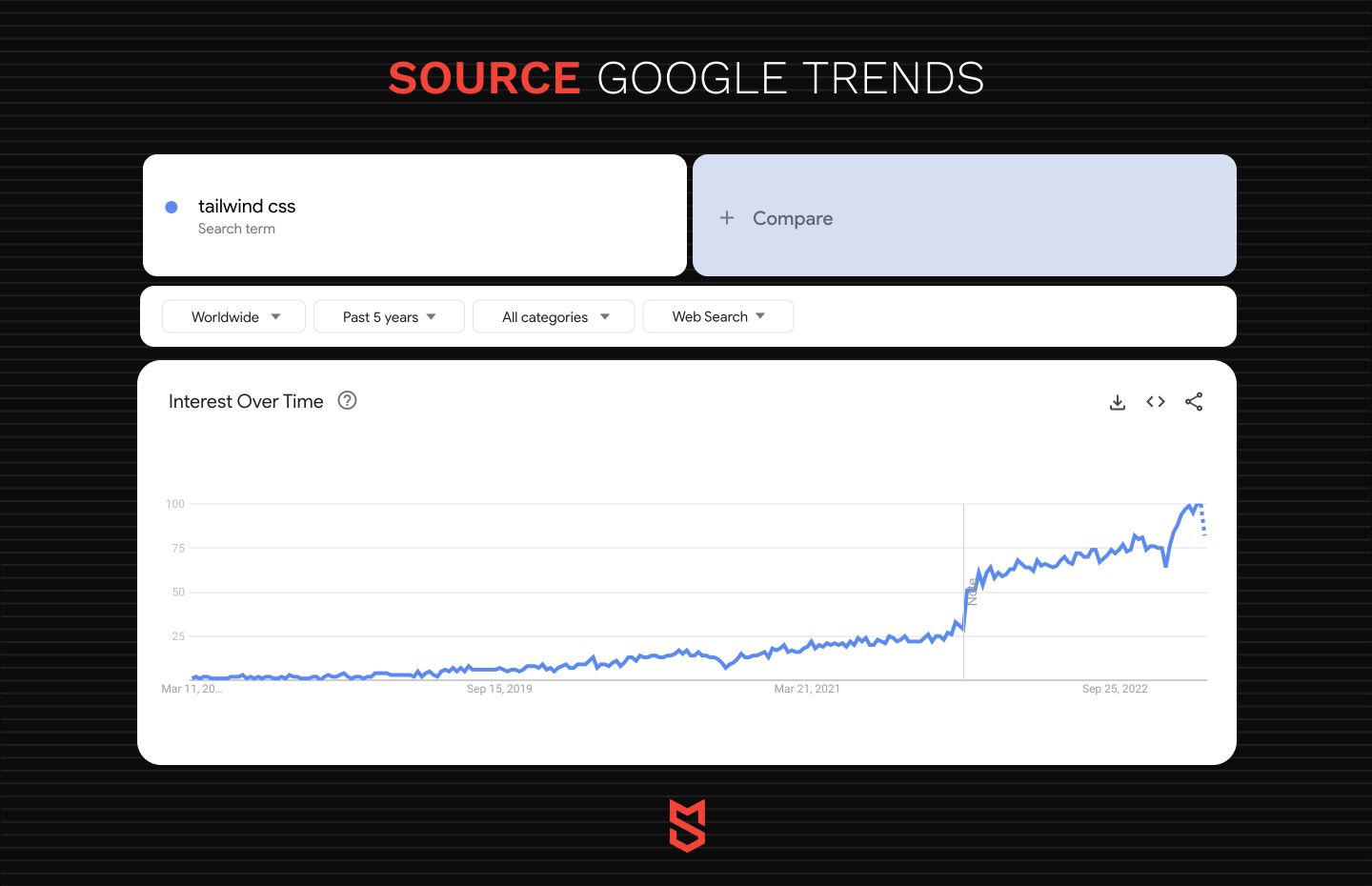
[Source: Google Trends]
The peculiar thing about Tailwind is that it’s not a UI Kit, which sets it apart from other CSS frameworks. It has no built-in UI components. Instead, Tailwind offers a set of widgets for fast UI development with Atomic CSS utility classes. This means you’ll be able to build from scratch and exactly the way you need, unrestricted by themes and styles other CSS frameworks offer.
You’ll need to be familiar with Atomic CSS, though, which makes Tailwind a little bit of a challenge compared to its rivals. On the bright side, it will give you the most custom look and feel.
Frontend trends suitable for SMBs
Most of the above-named frontend trends can be helpful for small and mid-sized businesses since they aim to build fast-loaded and responsive web applications. Following modern frontend trends can help SMBs differentiate themselves from their competitors, create a memorable user experience, and win their target audience's loyalty.
The question is, “Which frontend trends to use specifically for your project?” You can make data-driven decisions based on our recommendations after our team analyze your business needs and pick your project's relevant system requirements.
New UI trends in web development
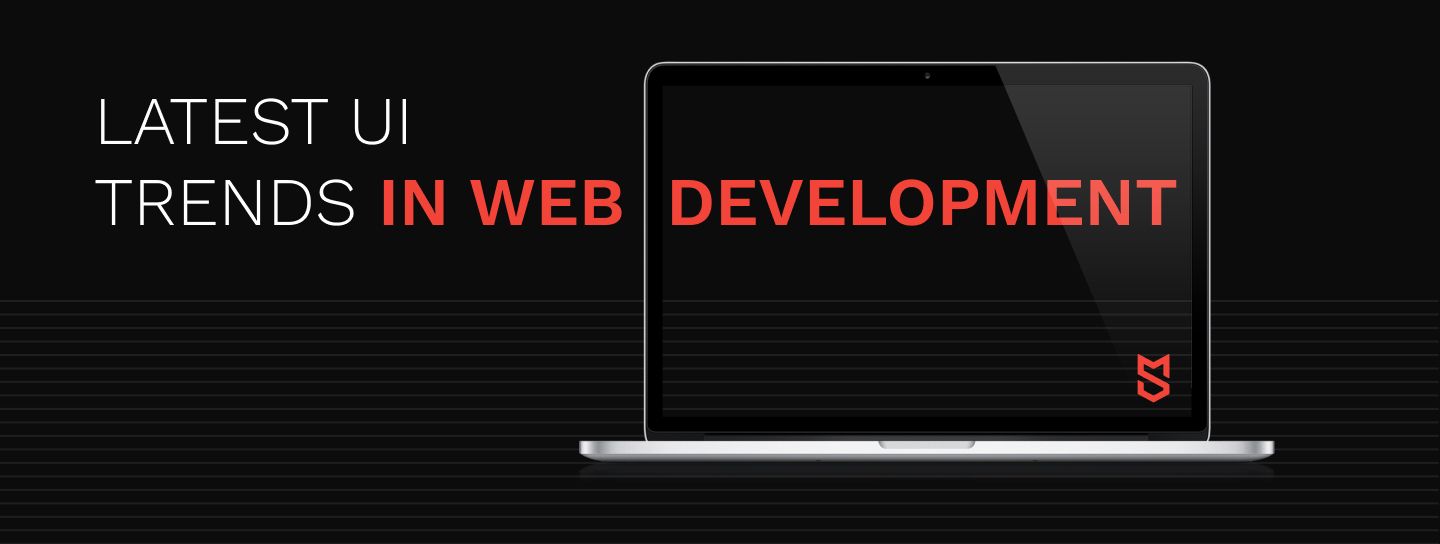
Motion UI design
When it comes to design, Motion UI is the latest trend in web development. In a nutshell, Motion UI means exactly what the name says — adding action to your website’s pages. And it doesn’t only include visuals. Micro-interactions are as much a part of Motion UI as animations. Responsive gestures can help your visitors understand the meaning behind an element — for example, by simply rolling out an explanation when the cursor is hovering over it.
Adding motion to your website’s interface can achieve a number of goals:
- Help users navigate the site with ease
- Attract attention to the important parts of your website
- Entertain and distract users while they wait for a transition from one screen to another
- Enhance your brand identity
Motion helps website owners tell a story in very few words. Or in no words at all. The key is to do it just right — not too much and not too little.
Dark mode
Dark mode is a design trend that has become increasingly popular in recent years. It involves using a color scheme that is predominantly dark, with white or light-colored text and elements. The dark mode is not only visually appealing but also has practical benefits, such as reducing eye strain and saving battery life on mobile devices with OLED screens.
Other web application technology trends
We’d like to point out several trends that aren’t exactly frontend-, backend-, or design-related. These are simple things that matter more and more with each passing year and as technology develops.
Data security and privacy
Today, we have shorter and shorter breaks between new data leak scandals. But it still takes a leak for someone to try and patch a hole. It’s the same in the physical world and online. For this reason, new high-end security protocols are developed constantly: SSL certificates, security checks, DDoS attack protection, and so on and so forth.
In May 2018, the European Union issued its General Data Protection Regulation, or GDPR. According to the GDPR, websites ought to inform visitors of what information will be gathered about them (either through cookies or by providing an email address and filling out a profile) and how that information will be used. As a result, we’ve seen a huge increase in investment in cybersecurity. People demand safety online now that we manage our identities and finances on the internet.
Data security isn’t a future trend anymore. It’s today’s trend, and it will only become bigger with time. So if you’re a website owner, you need to keep your eyes open.
Load speed
If you’ve read this article in its entirety, you might have noticed the number of technologies, both backend and frontend, that are focused on faster page loading, faster task completion, faster everything. We’re always in a hurry, and when a page loads too slow, we abandon it and go for an alternative. After all, there are plenty. Loading speed was, is, and will be trending in web development in the next few years, and web developers need to keep in sight all the new technology aimed at speeding up websites.
Blockchain technology
Blockchain technology allows you to transfer and store data and transactions in a transparent, secure, decentralized way. It has a potential to revolutionize various industries, including fintech, healthcare, and supply chain management.
Internet of Things (IoT)
IoT refers to the network of connected physical sensors set up on different devices, vehicles, and home appliances, that can communicate with each other and exchange data. It is transforming manufacturing, transportation, and medical web development by improving efficiency and productivity through automation.
Cloud computing
Cloud computing refers to delivering computing services, including storage, processing, and software, over the internet. It allows businesses to access these resources on demand without costly hardware or infrastructure. Cloud computing is becoming increasingly popular as companies look to reduce costs, increase flexibility, and scale.
Automation testing
Another trend in software development is using software tools to automate the process of testing web applications. It allows for faster and more efficient testing, mitigating the risk of errors, and improving the quality of the final product. Automation testing is becoming more important as web applications become more complex and require rigorous testing to ensure their functionality and security.
Conclusion
This is our take on the latest web technologies we expect to be hyped over 2023 year. All of these technology trends have the potential to significantly impact the web application development services. Adopting the latest web development trends maximizes your chances to gain a competitive advantage in the market and magnetize your users.
Thanks to our vast experience in software development, we’re happy to offer you a helping hand with choosing the technologies investing in will provide you with the desired results.

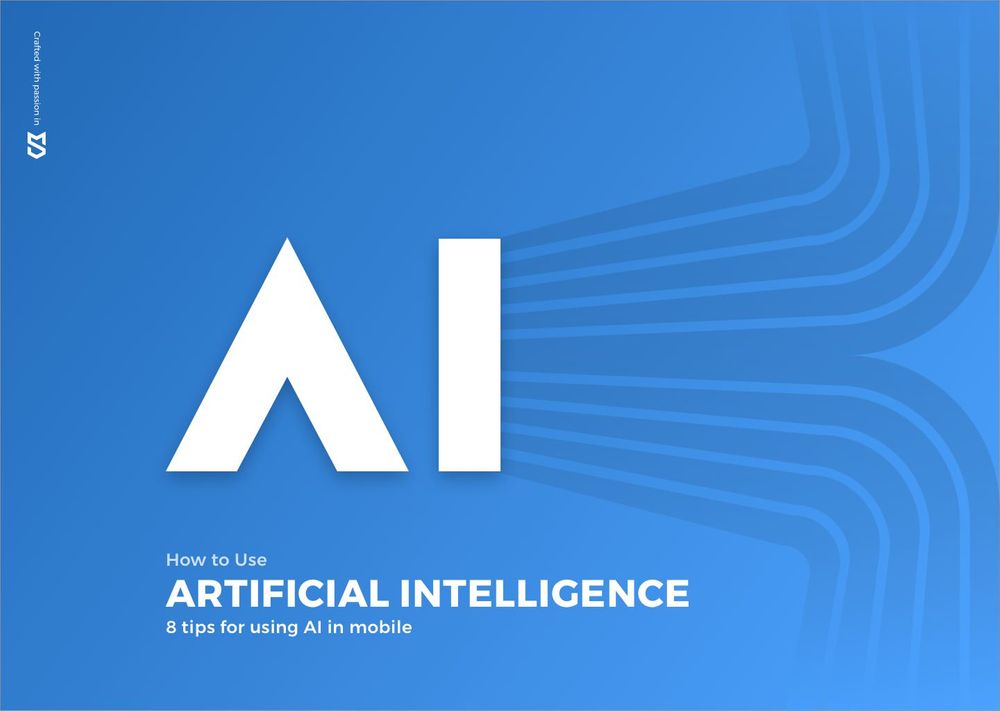
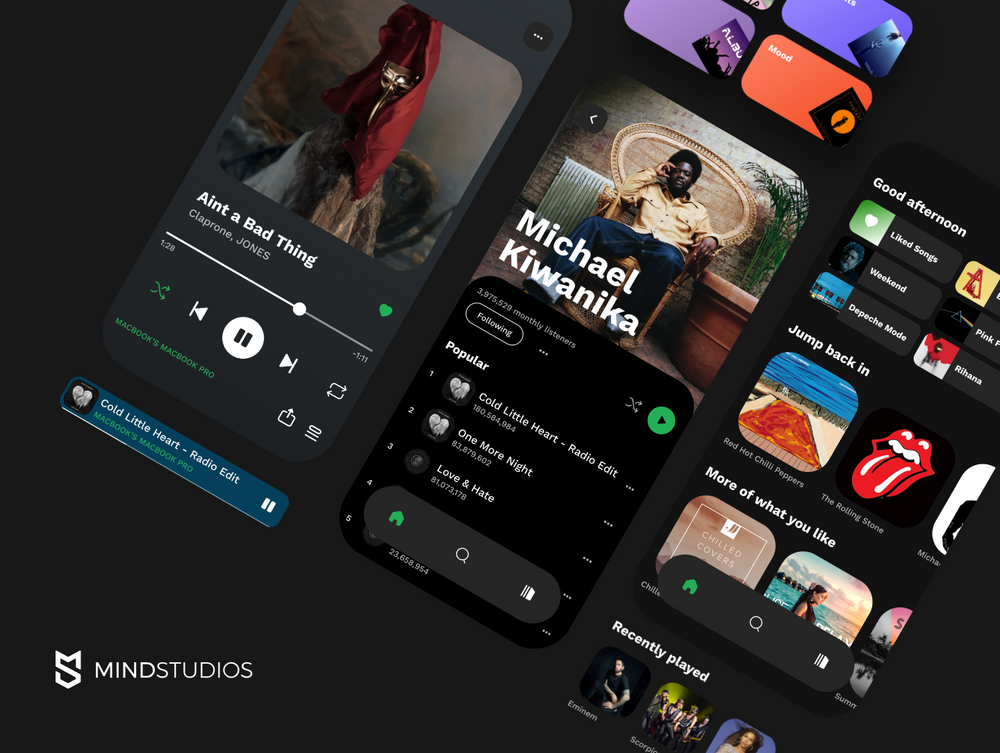
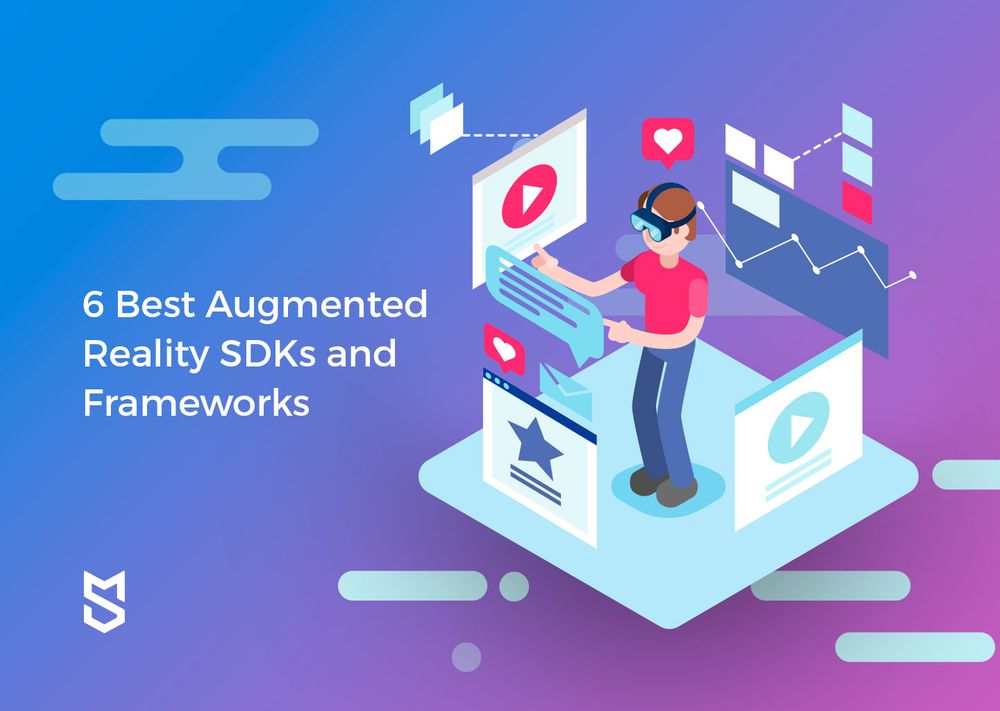

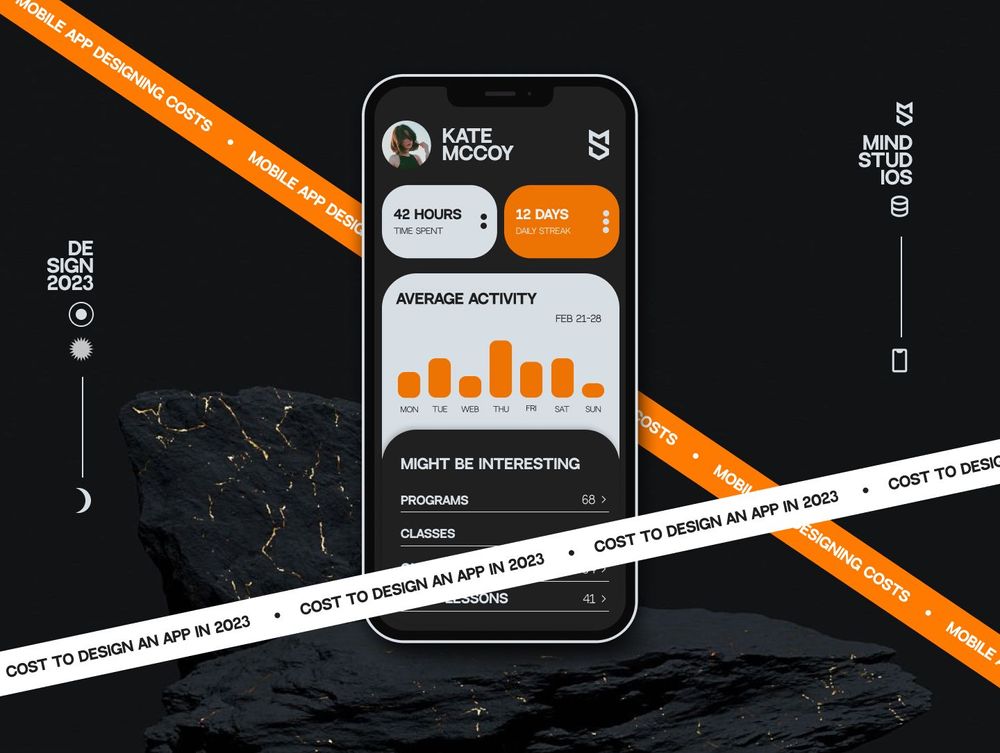


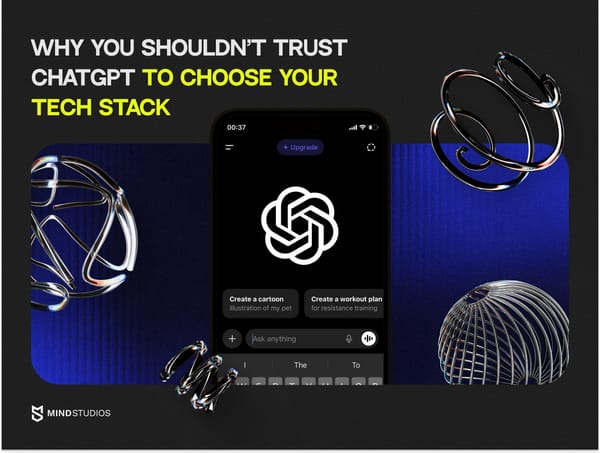


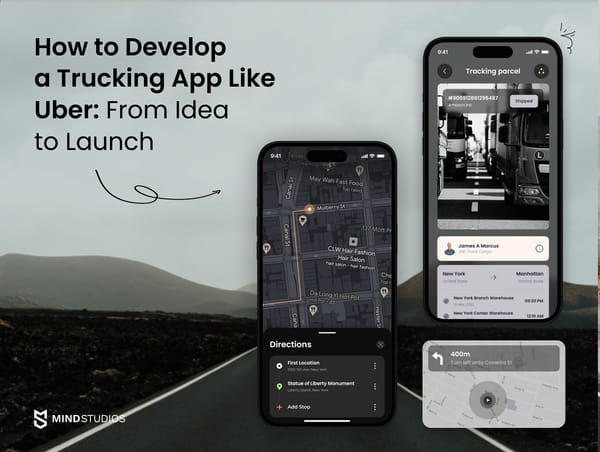
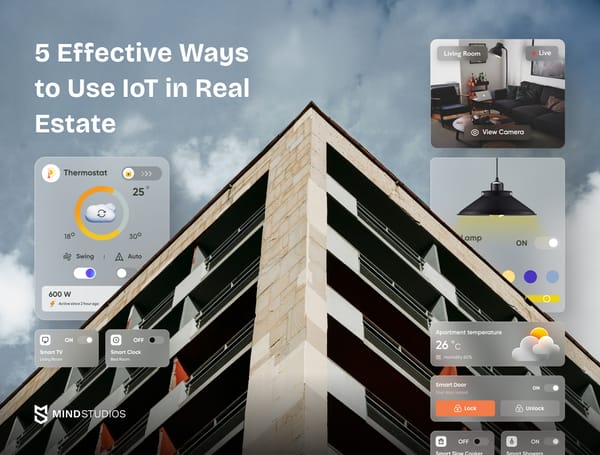
![How to Create an On-Demand Medicine Delivery App [Expert Guide]](https://themindstudios.com/blog/content/images/size/w600/2025/03/IMG-1-Cover-6.jpg)

